The content of the article
Willow Shelter - an endangered species of butterflies. Other names: Iris willow, Great Willow, Overflowing or Irida. It is named, like many types of butterflies, in honor of the ancient Greek goddess (Iris).
Willow migrant in some countries is listed in the Red Book, and collecting animals is prohibited. Many butterfly lovers are attracted to the bright color.
Appearance
The wingspan can reach 8 cm. The outer side of the wing is black with a brown tint. In males, a bright purple overflow is observed. On the front wing there are white spots, on the hind wings there is a strip of the same color and a black eye in a dark red ring. The inside of the wings is gray or dark gray. The edges are brown or rusty, black or white spots. A strong subspecies difference is observed. Sexual differences are pronounced. Females are larger. Males have a brighter color.
Habitat
Specimens of Willow Shelter are found in Central and Eastern parts of Europe, in Central and Southern Russia, in the northwestern region of Kazakhstan, in most of China, throughout the Amur region. Many individuals live in Japan, Korea and Primorye.
In Russia, most often the Overflow site can be found:
- Southern Urals;
- Western Siberia;
- East Transbaikalia;
- the area near the Carpathian mountains;
- Middle Volga.
Likes to settle in forests of all types, near water bodies. Some subspecies live at an altitude of 1,500 meters above sea level in the Carpathian mountains. The main condition for living is high humidity. It is needed for the full development and growth of caterpillars. In hot and sunny weather, a large accumulation of butterflies is observed near rivers and lakes.
Developmental stages and reproduction
Butterflies of this species prefer to lay eggs on the outside of the plants they feed on. Individuals develop in one generation.
In the form of a caterpillar, Willow Overfill takes place between August and June. The body of the caterpillar is green with bright yellow stripes and dots. There are 2 short blue horns on the head, and 2 red spiky processes on the opposite end.
The female lays 2 bright green eggs. The larva is born after 8-10 days. Overwintering an individual at the caterpillar stage. The butterfly lives in the form of a pupa for 2 or 3 weeks.
Demeanor
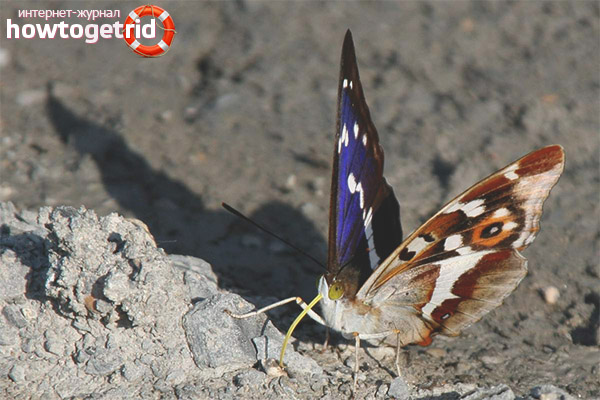
Most often, Willow Shelter can be found from early June to late July. Males fly in flocks on forest edges and roads, near streams and large puddles, over the excrement of animals. Females prefer to hide in tall grass and piles of foliage. Only fermented sap of trees can lure them. Individuals like to pack in flocks with other species. The willow bedworm is very shy and careful when flying.
It feeds on goat, eared, ashy and other species of willows. Also loves aspen. The caterpillar swallows the leaves without touching the veins. The formed butterflies feed on the nectar of the same plants with the help of a proboscis, which, after eating, is twisted into a spiral.
Species extinction
The over-migration has been included in the Red Book of many countries: Russia (Moscow and Smolensk region), Ukraine, Latvia, Germany and Sweden.
The abundance of the Overflow Butterfly is constantly decreasing. The main factor is human intervention. Huge territories of forests are cut down, the species structure of the habitat is changing, caustic pesticides are used. All this changes the environmental component.
Interesting Facts
- Males on the front wing have flakes that emit odorous gases in order to attract females.
- Purple or metallic reflections on the wings of males are not the result of pigmentation. You can see this beautiful effect only in sunny weather and at a specific angle. Bright overflow helps males to deceive enemies and hide from them.
- Winters caterpillar on willow bark. During this period, the body color acquires a brown tint, thanks to which the insect is well masked. As soon as spring comes and the heat comes, the caterpillar again acquires a light green color.
- When butterfly hunting gained popularity, collectors used manure and carrion to attract individuals. Prior to that, they used huge nets with a handle 9 meters long.
- The name "Irida" comes from the mythology of Greece. She was considered the goddess of the rainbow and mediated between humanity and deities.
- Moths have poorly developed forelegs. They are pressed to the body and have no functions.
- A butterfly can fly on a shiny thing, because it attracts bright objects.
- There are special receptors on the antennae that pick up odorous signals in the air.
- In 2011, in Germany, the species Willow Shelter was declared the butterfly of the year.

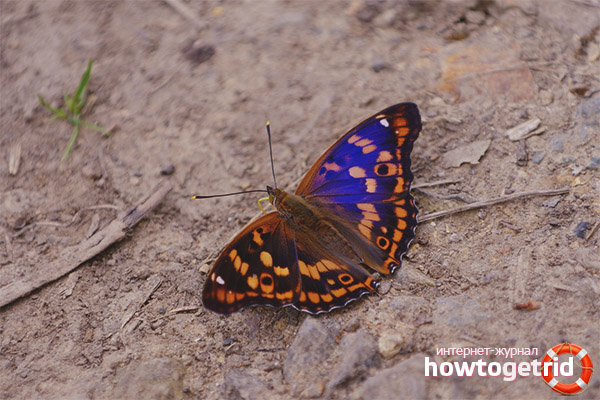
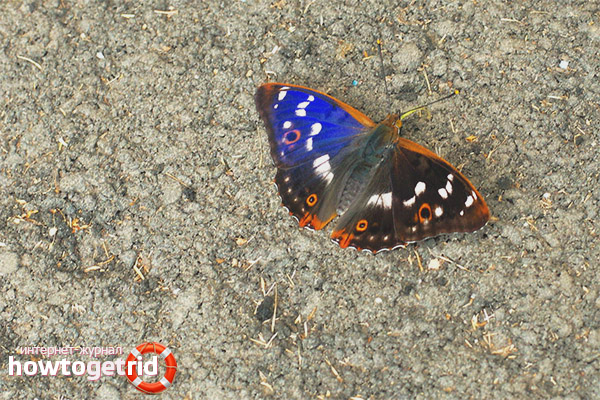
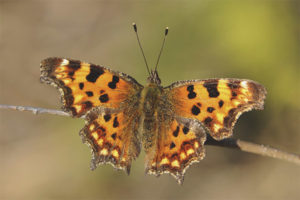

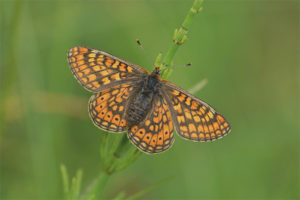


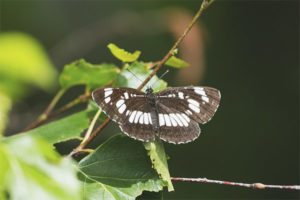
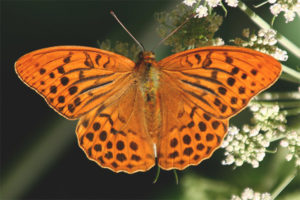
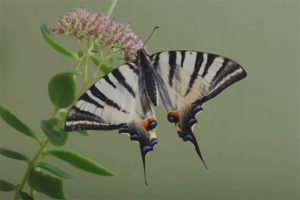
Submit